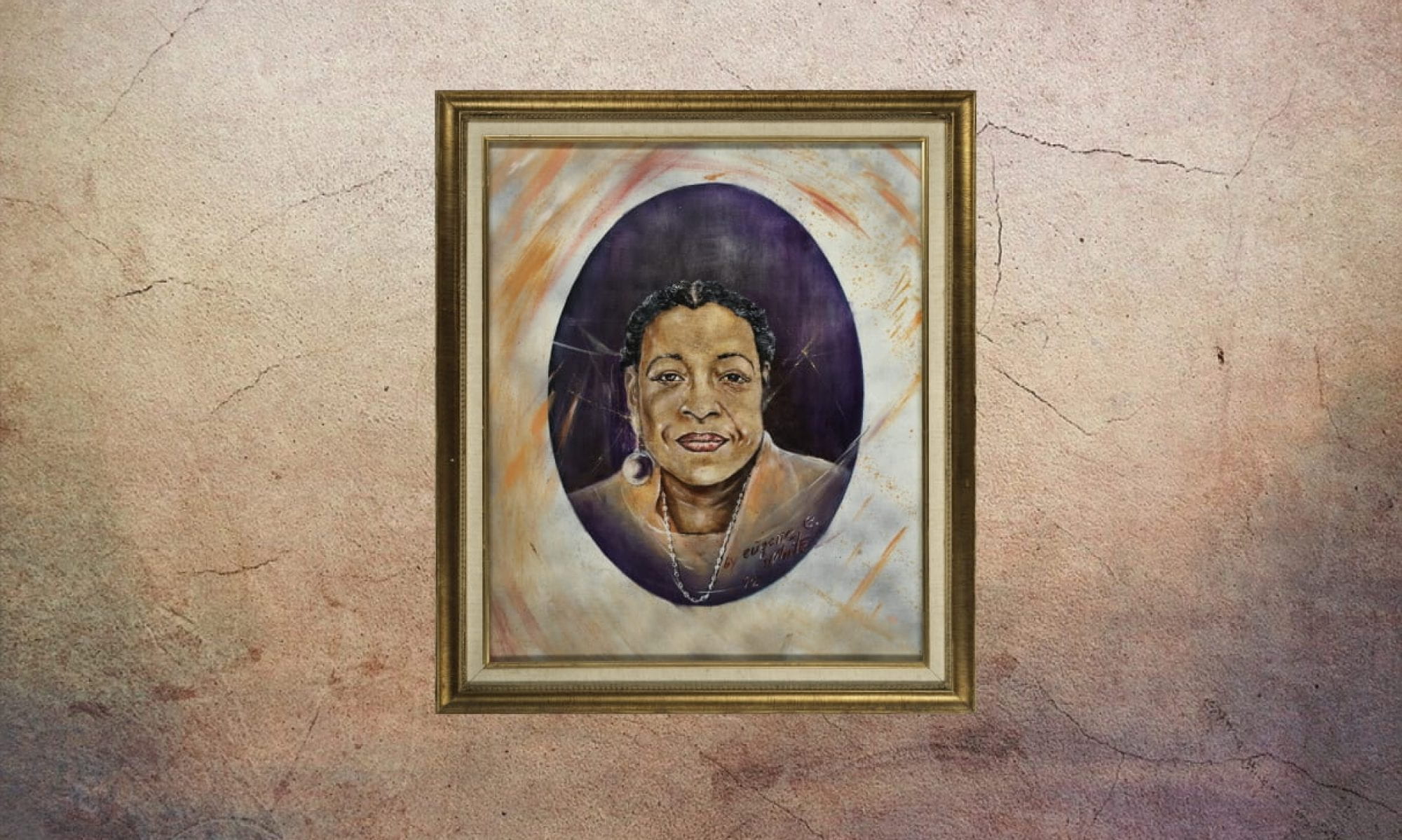
Small in stature yet resilient in spirit and tenacious in style, Mary Helen Rogers became known as the mother of the Western Addition and fought for its preservation as an African American business and cultural hub. Born and raised in Texas, Mary married in 1945, and moved to San Francisco in 1965 with her husband and their twelve children. Her long life of community activism was sparked when she was denied housing in the Sunset District based on her race. She told KQED in a 2001 documentary: “When they found out I was black, all of a sudden it was rented.” At the time, she was 40 years old and the Fillmore was in the middle of an urban renewal plan that was sweeping the “ghettos” of the nation and throwing communities into upheaval.
The renewal was a housing redevelopment project that followed most of the United States after World War II as a plan to boost the economy, but Rogers understood that the renewal was a separation of cultures. As the government tore down blocks of the Western Addition, the former “Harlem of the West” that had drawn Ella Fitzgerald and Duke Ellington, Rogers went to protest to the city’s redevelopment agency. With just a ninth grade education Mary became an expert in housing law, a neighborhood legend who baked delicious dinner rolls out of scratch and a “true matriarch of community activism in San Francisco.” Rogers was a fearless woman and would lay down in front of bulldozers to protect homes.
Rogers helped to start the Western Addition Community Organization (WACO), a community organization that fought for social justice in redevelopment. WACO was largely focused around the social justice wing of the Catholic church and faced fierce opposition from the SF Redevelopment Agency (RDA). Dynamic RDA head Justin Herman called this group a “passing flurry of proletarianism.” However, in 1967, WACO demanded community participation in planning, financial assistance for the displaced, and replacement housing from the San Francisco Redevelopment Agency. In 1975, WACO’s legal actions against redevelopment resulted in the Federal Uniform Relocation Act, which spread all throughout the United States and stated that if federal money is used to displace a person, federal money must be used to relocate them. Rogers said: “We saw that kids got back in school, that mothers got their welfare grants on time, and cleaned up the streets with brooms and shovels.”
Mary Helen Rogers was a tenacious and effective advocate for housing rights in San Francisco.
On becoming an activist, Rogers says that it was the housing situation in the Fillmore that inspired her: “[I] really got angry when I found out that nobody wanted to rent to black families.” She saw urban renewal in the Fillmore for what it was, the bottom line was to move out the black community, build luxury high rises, and give the properties to incoming suburbanites. Those affected were given a set amount of $2,000 for moving costs and were left helpless to do anything about it. Rogers, however retaliated: “My position was, I refused to accept that I couldn’t stay where I wanted to stay. I refused to go somewhere else because I was black. I decided I wasn’t going to move. I wasn’t going anywhere until I got good and ready.”
Rogers went on and served as a San Francisco Housing Authority community relations manager. She founded the Western Addition Citizens Advisory Committee, which provided broad-based community input to publicly funded development initiatives. Rogers then served as a secretary/treasurer of the National Tenants Association. She also served as a founding board member of Westside Mental Health Clinic, a board member of Agape Outreach Center, chair of the San Francisco Juneteenth Committee, and a parent volunteer at the Raphael Weill Elementary School, later known as Rosa Parks Elementary School.
Rogers died on March 3, 2006, after a long battle with cancer. However, her fight for fair and equitable treatment of school-aged children, African American families, welfare recipients, community churches, and minority businesses will not be forgotten. A senior community center has been named in honor of Rogers in the Western Addition, and in cooperation with the Department of Public Health’s Direct Access to Housing Program, now houses low-income and formerly homeless seniors. Mayor Gavin Newsom fondly described Rogers as someone “blessed with a nurturing and ever-generous spirit, she unflinchingly came to the defense of those in need of a voice and a hand.” Rogers fought tirelessly until her last days for justice in the Fillmore, and spurred by her passion for community activism, left a legacy of female black excellence.
— Hannah Shepherd
Works Cited
Bulwa, Demian. “Mary Rogers—S.F. community activist.” SFGate. 13 Jan 2012.
“Mary Rogers Community Organizer.” KQED.
“Mary Helen Rogers Senior Community.” Chinatown Community Development Center.
Pelosi, Nancy. “Honoring Mary Rogers.” 152 Cong. Rec.(Bound) 3561—Honoring Mary Rogers.
Welch, Calvin. “WACO Attacks Redevelopment.”
